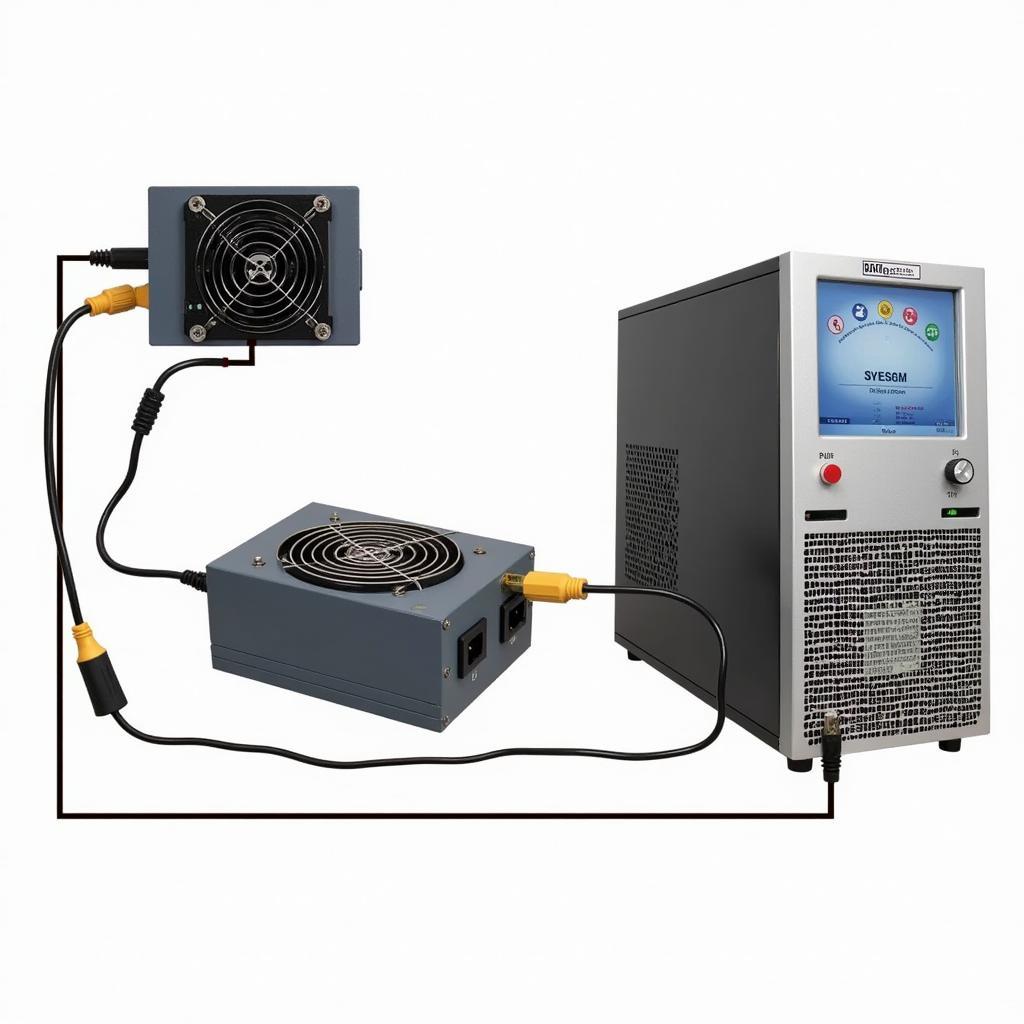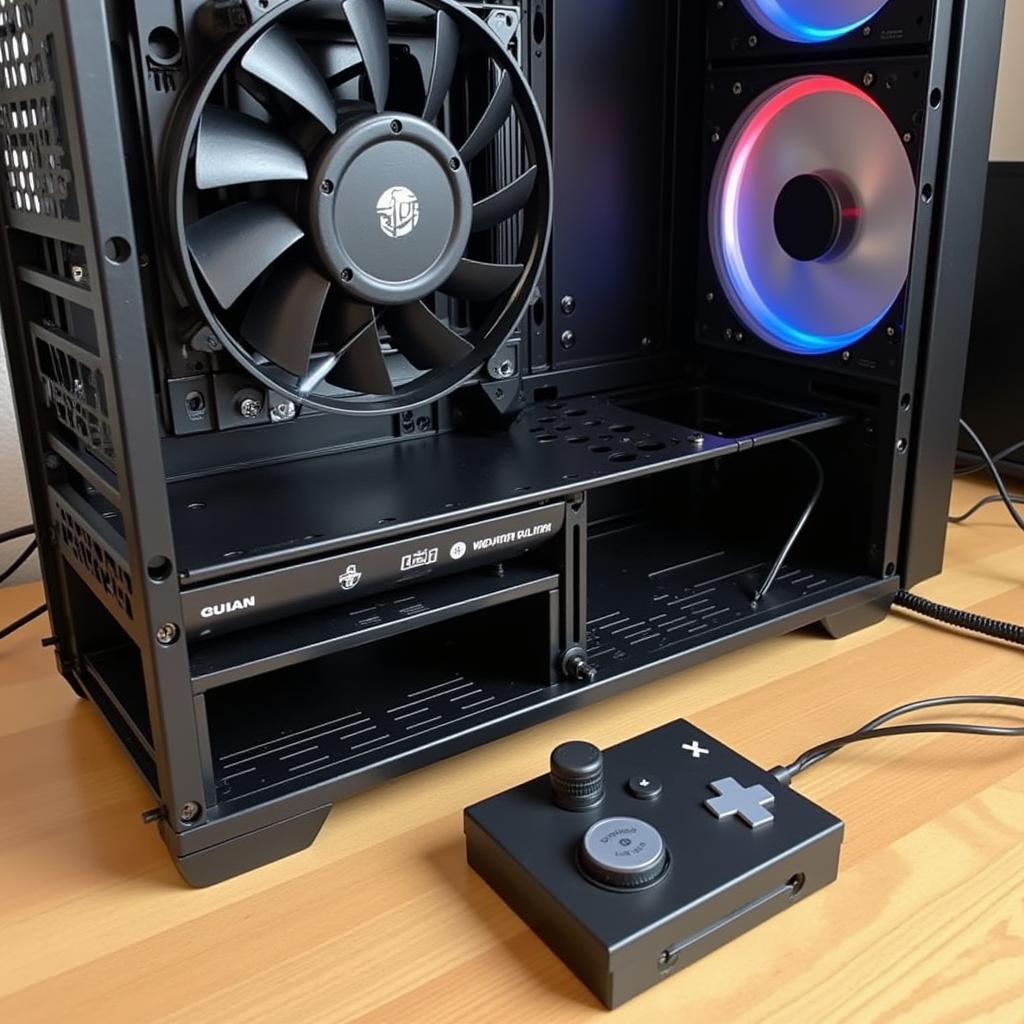So, you’ve got yourself a fancy new PC fan controller, ready to fine-tune your cooling setup for optimal performance and acoustics. But there’s a catch – you want to run it independently, without having it tethered to your PC’s motherboard. Maybe you’re testing fans, troubleshooting a system, or simply need a standalone solution. Whatever your reason, this guide will show you how to power a PC fan controller without a PC.
Understanding PC Fan Controllers and Their Power Requirements
Before we dive into the methods, let’s quickly cover the basics. PC fan controllers regulate the speed (and thus, noise level) of your computer fans. Most connect to your motherboard via a USB header and draw power from a SATA or Molex connector coming directly from your PC’s power supply.
The key takeaway here is that your fan controller needs two things:
- Data Connection: This tells the controller how fast to run the fans.
- Power: This provides the juice to actually spin the fans.
We’re focusing on situations where a direct connection to your PC is not possible.
Methods to Power a PC Fan Controller Without a PC
Here are the most common and effective methods:
1. Using a PC Power Supply Tester
A PC power supply tester is a handy tool for any tech enthusiast. It allows you to turn on your PC’s power supply without actually booting up the entire system. Most testers have a built-in fan controller or, at the very least, provide the necessary power connections (Molex or SATA) to power your standalone fan controller.
How-To:
- Connect the appropriate power cable from your power supply to the PC power supply tester.
- Connect the corresponding power cable from your fan controller to the tester.
- Switch on the power supply tester. Your fan controller should now power on.
 Powering a Fan Controller with a PC Power Supply Tester
Powering a Fan Controller with a PC Power Supply Tester
2. Adapting Power from a Different Source
If you don’t have a PC power supply tester, you can get creative with adapters to draw power from other sources:
- Molex to SATA Adapter: This lets you power your fan controller using an older Molex connection if you don’t have a free SATA power connector.
- DC Barrel Jack Adapter: Some fan controllers might use a DC barrel jack for power. You can find adapters to connect these to various power sources, such as wall adapters.
- USB Power: Certain smaller fan controllers may draw power directly from a USB port. You can use a phone charger or a USB power bank for this purpose.
Important Note: Always double-check the voltage and amperage requirements of your fan controller and the power source you’re adapting from. Using an incompatible power source can damage your hardware.
Advantages of Powering a Fan Controller Independently
Running a fan controller without a PC offers several benefits:
- Testing and Troubleshooting: Easily isolate fan issues, test fan curves, and ensure your cooling setup is working optimally.
- Standalone Fan Control: Ideal for custom builds, test benches, or any situation where a dedicated fan control system is desired.
- Portability: Take your fan controller on the go for LAN parties or other events where you need precise fan control.
 Standalone Fan Controller Setup
Standalone Fan Controller Setup
Conclusion
Powering a PC fan controller without a PC is entirely achievable with the right tools and a little ingenuity. Whether you’re a seasoned builder or a curious enthusiast, having the flexibility to run your fan controller independently opens up a world of possibilities for testing, troubleshooting, and achieving your desired cooling performance.
FAQs
-
Can I damage my fan controller by powering it without a PC?
No, as long as you use a compatible power source with the correct voltage and amperage, you won’t damage your fan controller. -
What if my fan controller doesn’t have a separate power connector?
Some basic fan controllers might draw power directly from the motherboard fan header. In such cases, you’ll need a motherboard connection to power it. -
Are there fan controllers specifically designed for standalone use?
Yes, some fan controllers are designed for standalone operation and often come with dedicated power adapters. -
Can I control the fan speeds without a PC?
Most standalone fan controllers have physical knobs or buttons for adjusting fan speeds. -
Where can I learn more about 3 pin pc case fan power splitter cable?
Check out our detailed guide on 3-pin PC case fan power splitter cables for more information.
For those looking for high-quality fans and accessories, consider exploring our selection of fan case 8cm trong suốt đèn màu and powerful Aerocool fan controller options. We also have resources available if you’re dealing with a computer no fan situation or are searching for fan Coolmoon tphcm.
If you have any further questions or need assistance, our dedicated customer support team is available 24/7. Contact us at 0903426737 or email us at fansbongda@gmail.com. You can also visit our office located at Tổ 9, Khu 6, Phường Giếng Đáy, Thành Phố Hạ Long, Giếng Đáy, Hạ Long, Quảng Ninh, Việt Nam.


